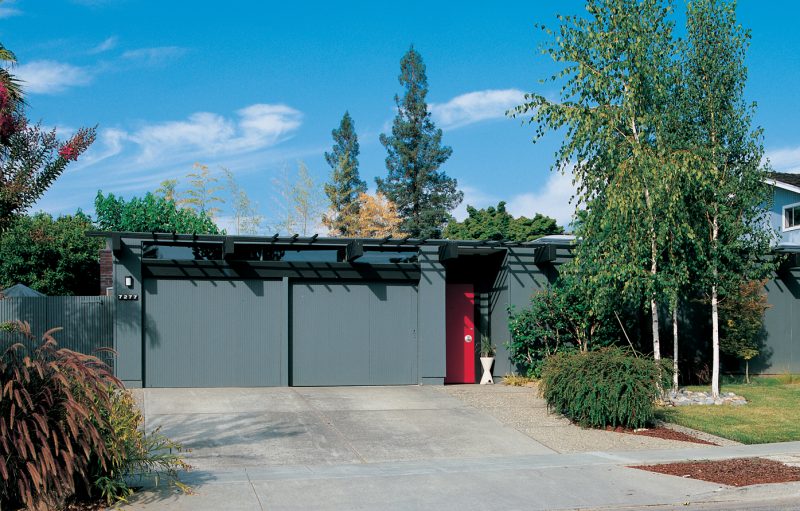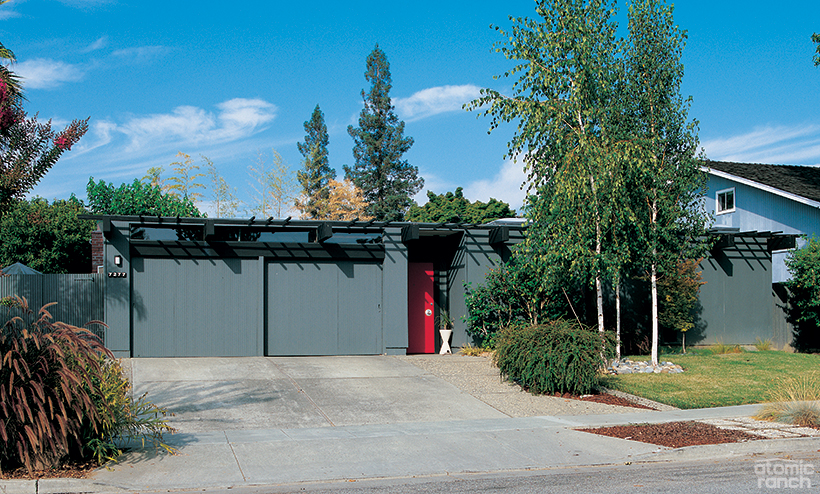
The story of this flat top home all started with a nightmare. Well two, actually. “I had a slick Italian kitchen designed in 3-D CAD and was ready to tear out the original kitchen,” says Loni Nagwani, a realtor specializing in San Jose Eichlers. “But I started having nightmares that when the contractors came to rip out the cabinets, I was nailing them back up; I realized I should rethink it.
“Every time I tried to make the layout work with the fridge and other things moved somewhere else, I’d end up putting them back where they were in the first place. It makes you realize that actually there’s nothing wrong with the design, that maybe you’re the problem.”
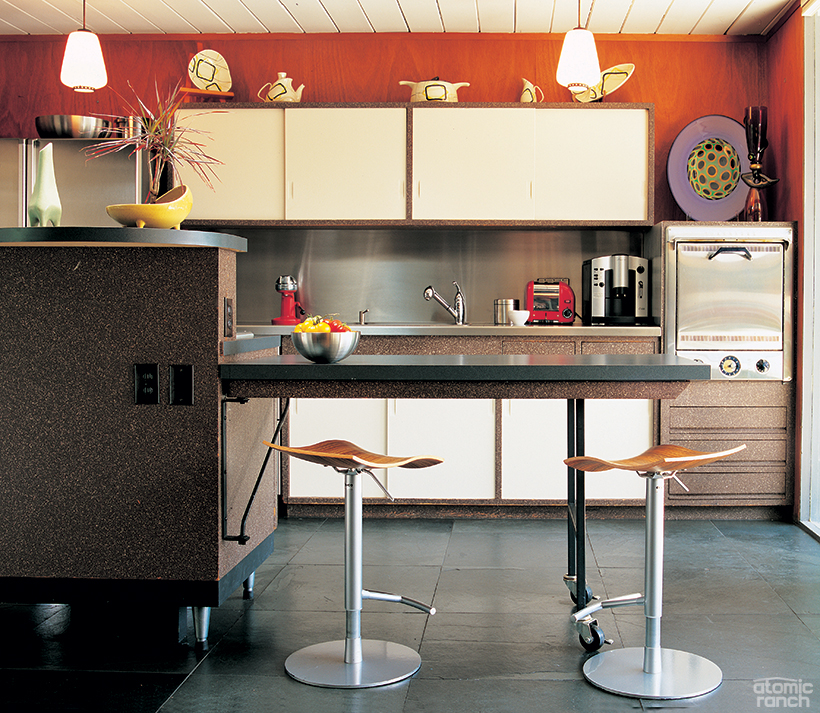
Her open-plan kitchen is in a flat-roof 1958 Anshen and Allen-designed Eichler in the Fairglen neighborhood. Instead of gutting the space, Nagwani and her husband, Bharat, chose to update judiciously while keeping the original speckled brown “Zolatone” cabinets. A multicolored lacquer paint finish still used by auto body shops, Joseph Eichler specified Zolatone in some of his tracts, but it’s unusual to come across an extant installation today.
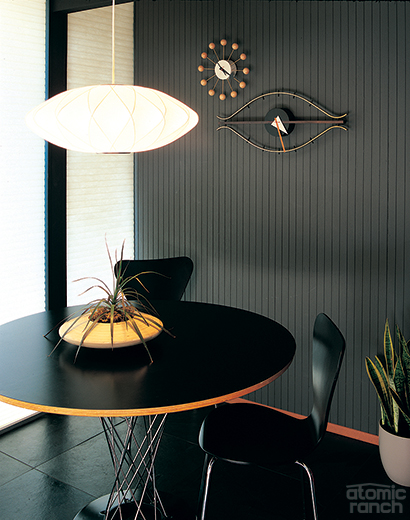
The central island that holds the vintage Thermador cooktop has been raised on legs to make the surface a more comfortable working height and, along the back wall, a stainless steel counter and backsplash are also new. A GE Profile refrigerator and Fisher & Paykel drawer dishwashers were added, but Nagwani kept the signature pivoting laminate table, which makes a great buffet or a place for daughters Shanti, 12, and Shreya, 9, to work on school projects.
“Our kitchen is an example of what an original Eichler kitchen can be with very little cost—$5,000 to $10,000 in upgrades,” Nagwani explains. “It looks modern because it was designed modern. If I had a sleek Italian kitchen it wouldn’t go with the rest of the house. Keeping the kitchen was one of the smartest decisions I made.”
Neighborhood Nightmare
The other bad dream connected to the house was readily apparent to anyone driving down the street. Some years earlier an enterprising contractor had convinced more than one Eichler owner to solve leaky roof and insulation problems by installing pitched roofs atop the originals. A few Fairglen homes still have them, as did the Nagwanis’ house when they bought it.
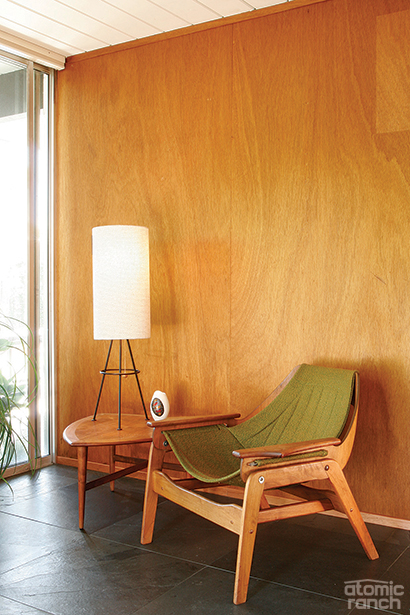
Roof aside, the home’s original condition is what really clinched it for Nagwani, but per usual she was representing homebuyers and her duty was to them first and foremost. “For all of the years I was specializing in selling Eichlers, every house went to a client,” she says. “My husband was threatening to use another realtor so we could find our own Eichler.
“My clients came out [of the open house] and called me and said, ‘This is the worst Eichler I’ve ever seen!’ It smelled like mothballs, it had 42-year-old green shag carpet, asbestos tile and red indoor/outdoor carpet duct taped together at the seams. The part people couldn’t get over was the roof. I didn’t even think twice about ripping it off,” she says blithely. “From the minute I stepped inside, it was over. I grabbed the lock box to make sure no one else was getting into the house.”
The Nagwanis discovered the oven had only been used to store Tupperware, and it appeared that the bachelor owner never cooked and didn’t have a washer or dryer. The original grass cloth–covered sliding closet doors were in good condition, and “every fixture, every knob, every switch plate was intact,” she enthuses. “It’s so much easier taking off a roof than piecing all of those things together. You end up having to scrap the idea [of originality] because you just can’t find a whole house of switch plate covers that match. The best previous owners to have are frugal, practical people like ours was. They would rather fix something than replace it.”
When it came to the paneling, Loni Nagwani’s approach is similar. “So many times people think they need to sand the mahogany down or use degreasers that will take off the finish,” Loni says. “With Howard Feed-N-Wax and a light stain, it looks wonderful,” she advises. “Take a Scotch-Brite sponge and squirt the beeswax on it, and rub against the grain. It takes all of the dirt off so very seldom do you actually need to restain. The scrubby pulls the dirt out and removes built-up body oils off from around light switches and doorknobs and conditions the wood. It took four guys and $600 bucks to do the whole house in one day.”
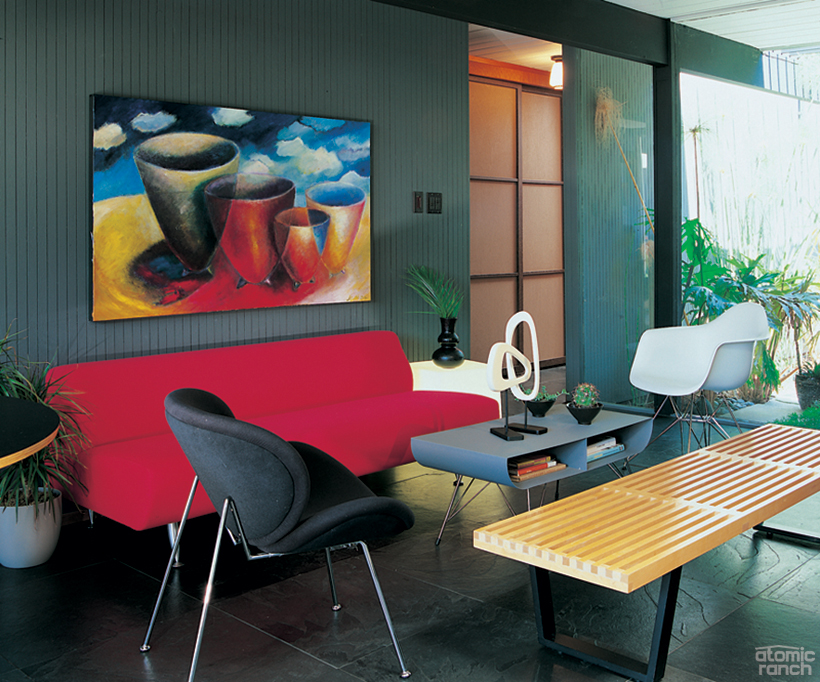
Consistent Upgrades
The couple had the offending roof demolished, put in remote-control skylights, upgraded the electrical system and installed black slate flooring throughout. (An estimate for a skim coat of concrete ran $5,000 more than slate.) They reroofed with insulating rigid foam topped with tar and gravel for aesthetics, and had the missing beams and trellis on the front facade re-created. The grooved Eichler siding was repaired, sanded and stained, and the interior mahogany paneling was refurbished. Nagwani was finally able to draw on the resources she developed over years of helping new Eichler owners renovate.
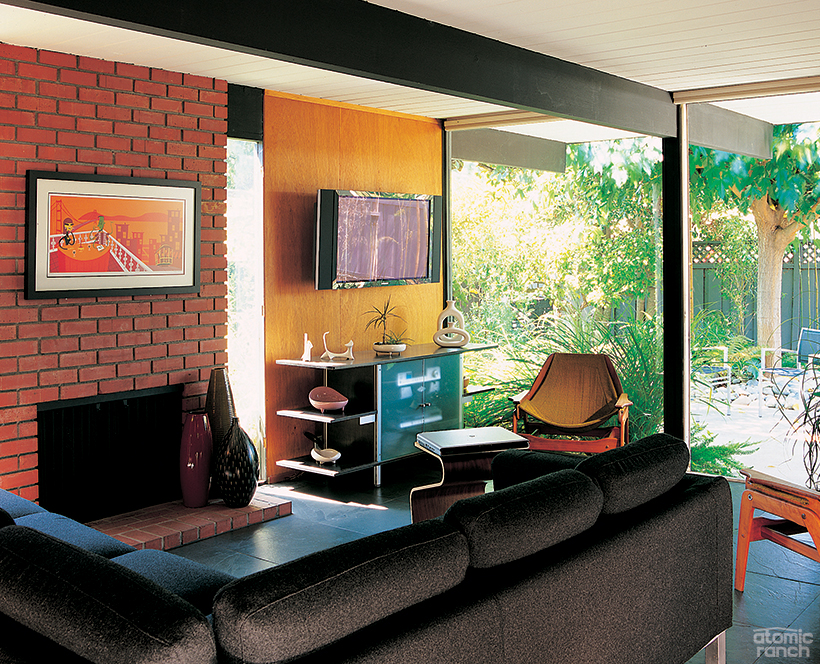
“One of the most important things is, when you walk in the front door, nothing should stop your eye but the back fence,” she instructs. “That may mean painting out the posts so that they disappear, or making sure your materials are consistent, or putting in the best flooring and making it the same throughout the house. It shouldn’t be carpet and it shouldn’t draw too much attention away from the architecture, and it should contrast with the walls. Slate, VCT, cork, bamboo, polished concrete, terrazzo, linoleum—they all work.
“[This neighborhood is full of] Eichler enthusiasts, but not necessarily purists,” she says. “Keeping with the architecture is my guideline. If you decide to do ultramodern, that can be beautiful. I group myself among people who are interested in maintaining the integrity of the architecture and the period and let it be what it is. It’s modern architecture, so any modern really works—Asian modern, midcentury modern, ultra modern, Palm Springs modern.”
Not a fan of architecture review committees, Nagwani thinks public education is key. “Eight years ago, I’d sell an Eichler and the first thing they’d do was tear out the original features. Now it’s a completely different ballgame— they want to find parts and restore it,” she says. “HGTV has done four Eichlers and Safeway wanted to shoot [a commercial] here in a retro kitchen. When houses are getting close to 50 years old, the appreciation is just beginning. The more these homes are written about, the more people network, the more they’ll be respected and the less we’ll have to mandate design guidelines.”
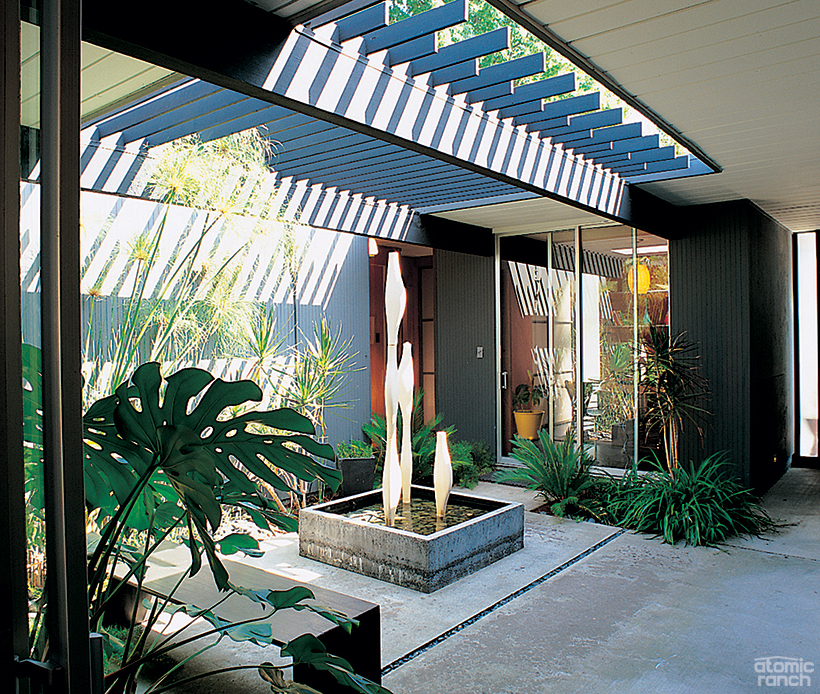
Education seems to be working, at least on the home front. “When we’re walking we’ll rate a house from one to 10,” older daughter Shanti told us back when she was 9. “Sometimes my mom will ask me five things I’d change about it. One time I saw one with a giant gold door handle, and squiggly little house numbers and a glass sculpture of a leprechaun. I get rid of the sculpture, and get a new handle and ask Carmen for new numbers.”
Mission accomplished.
For more Mid Century Modern renovation nightmares with happy endings, read on for Stops and Starts for a Prefab Home on the Oregon Coast. And of course, don’t forget to follow us on Instagram, Facebook and Pinterest for more Mid Century Modern inspiration!

